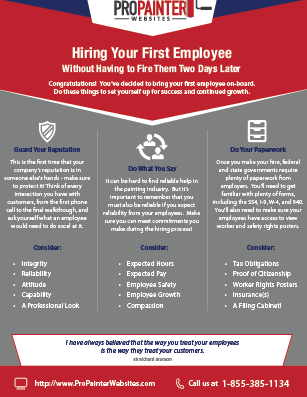Understand Just How Seasonal Conditions Impact The Success Of Industrial External Paint And Discover The Suitable Durations To Assure Resilient Outcomes For Your Task
Understand Just How Seasonal Conditions Impact The Success Of Industrial External Paint And Discover The Suitable Durations To Assure Resilient Outcomes For Your Task
Blog Article
Material By-Carlson Whalen
When you're intending a business external paint job, seasonal aspects can make or break your results. You'll wish to take into consideration just how temperature and moisture influence paint application and drying out times. Choosing the best season can ensure your paint sticks appropriately and lasts longer. However which periods are genuinely the best for this sort of job? Let's discover the crucial elements that can influence your project's success.
The Influence of Temperature Level on Paint Application
When you're preparing an industrial external paint task, the temperature can considerably affect just how well the paint adheres and dries out.
Ideally, you wish to paint when temperatures vary between 50 ° F and 85 ° F. If it's also cold, the paint may not cure properly, leading to concerns like peeling off or cracking.
On the other hand, if it's also warm, the paint can dry too rapidly, stopping correct bond and causing an irregular finish.
You must likewise take into consideration the time of day; early morning or late afternoon offers cooler temperature levels, which can be much more beneficial.
Constantly inspect the manufacturer's referrals for the certain paint you're making use of, as they often give advice on the ideal temperature level range for ideal results.
Humidity and Its Effect on Drying Times
Temperature isn't the only ecological aspect that affects your industrial outside paint project; humidity plays a considerable duty too. High humidity levels can slow down drying out times drastically, affecting the general high quality of your paint task.
When the air is filled with dampness, the paint takes longer to treat, which can cause concerns like bad adhesion and a greater danger of mold development. If you're repainting on a specifically damp day, be gotten ready for extended delay times between coats.
It's crucial to monitor neighborhood climate condition and strategy accordingly. Preferably, aim for moisture levels between 40% and 70% for optimum drying.
Maintaining these factors in mind ensures your task remains on track and supplies an enduring finish.
Best Seasons for Commercial Outside Paint Projects
What's the best time of year for your commercial external paint jobs?
Spring and early fall are typically your best options. During https://local-painters-near-me11150.blogars.com/33224168/discover-the-latest-methods-and-patterns-in-home-painting , temperatures are mild, and humidity degrees are often lower, producing perfect conditions for paint application and drying out.
Prevent summer's intense heat, which can create paint to dry also rapidly, bring about bad adhesion and coating. In a similar way, winter's chilly temperatures can impede appropriate drying out and healing, risking the longevity of your paint work.
Go for days with temperatures in between 50 ° F and 85 ° F for optimum results. Remember to check the local weather forecast for rainfall, as wet problems can ruin your job.
Preparation around these factors ensures your paint task runs smoothly and lasts longer.
Final thought
To conclude, preparing your commercial exterior painting tasks around seasonal considerations can make a considerable distinction in the result. By https://www.kiro7.com/news/trending/washington-crossing-delaware-painting-that-hung-white-house-up-auction/HOULE5ACKVDDVM3CI73XRXGSXI/ throughout the suitable temperature levels and humidity degrees, you'll guarantee much better bond and drying out times. Remember to keep an eye on regional weather report and select the correct time of year-- spring and very early autumn are your best choices. Taking these steps will certainly aid you attain a durable and expert finish that lasts.
